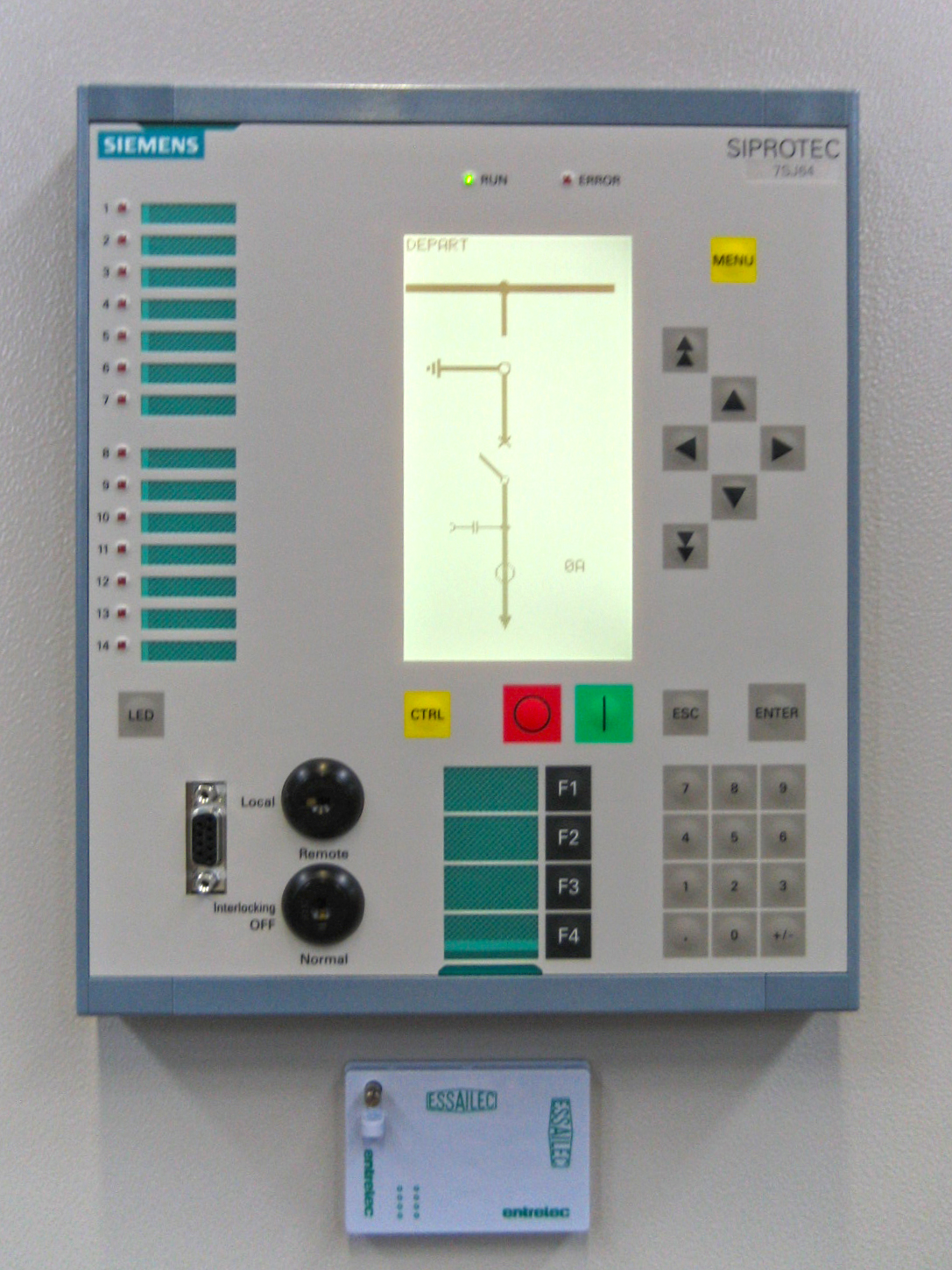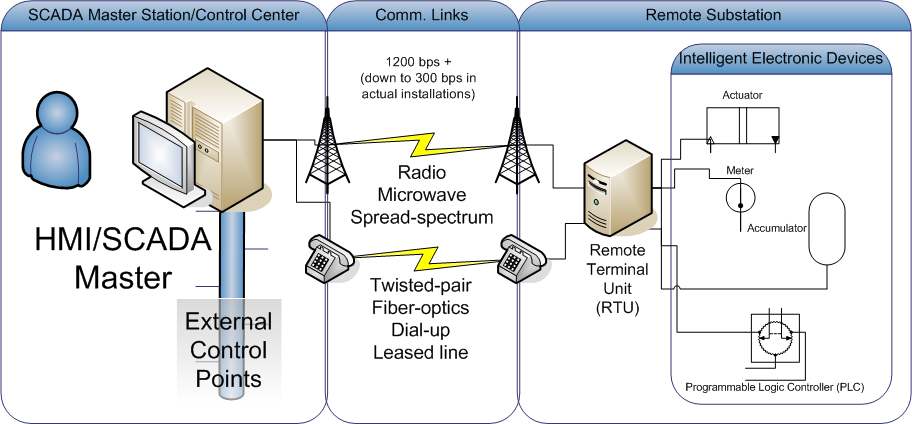|
IEC 61850
IEC 61850 is an international standard defining communication protocols for intelligent electronic devices at electrical substations. It is a part of the International Electrotechnical Commission's (IEC) Technical Committee 57 reference architecture for electric power Electric power is the rate at which electrical energy is transferred by an electric circuit. The SI unit of power is the watt, one joule per second. Standard prefixes apply to watts as with other SI units: thousands, millions and billions ... systems. The abstract data models defined in IEC 61850 can be mapped to a number of protocols. Current mappings in the standard are to MMS (Manufacturing Message Specification), GOOSE (Generic Object Oriented System Event) [see section 3, Terms and definitions, term 3.65 on page 14], SV (Sampled Values) or SMV (Sampled Measure Values), and soon to Web Services. In the previous version of the standard, GOOSE stood for "Generic Object Oriented Substation Event", but t ... [...More Info...] [...Related Items...] OR: [Wikipedia] [Google] [Baidu] |
Intelligent Electronic Device
In the electric power industry, an intelligent electronic device (IED) is an integrated microprocessor-based controller of power system equipment, such as circuit breakers, transformers and capacitor banks. Description IEDs receive data from sensors and power equipment and can issue control commands, such as tripping circuit breakers if they sense voltage, current, or frequency anomalies, or raise/lower tap positions in order to maintain the desired voltage level. Common types of IEDs include protective relaying devices, tap changer controllers, circuit breaker controllers, capacitor bank switches, recloser controllers, voltage regulators etc. This is generally controlled by a setting file. The testing of setting files is typically one of the most time-consuming roles of a protection tester. Digital protective relays are primarily IEDs, using a microprocessor to perform several protective, control and similar functions. A typical IED can contain around 5–12 protection functio ... [...More Info...] [...Related Items...] OR: [Wikipedia] [Google] [Baidu] |
Distributed Energy Resources
Distributed generation, also distributed energy, on-site generation (OSG), or district/decentralized energy, is electrical generation and storage performed by a variety of small, grid-connected or distribution system-connected devices referred to as distributed energy resources (DER). Conventional power stations, such as coal-fired, gas, and nuclear powered plants, as well as hydroelectric dams and large-scale solar power stations, are centralized and often require electric energy to be transmitted over long distances. By contrast, DER systems are decentralized, modular, and more flexible technologies that are located close to the load they serve, albeit having capacities of only 10 megawatts (MW) or less. These systems can comprise multiple generation and storage components; in this instance, they are referred to as hybrid power systems. DER systems typically use renewable energy sources, including small hydro, biomass, biogas, solar power, wind power, and geothermal power, ... [...More Info...] [...Related Items...] OR: [Wikipedia] [Google] [Baidu] |
Electric Power
Electric power is the rate at which electrical energy is transferred by an electric circuit. The SI unit of power is the watt, one joule per second. Standard prefixes apply to watts as with other SI units: thousands, millions and billions of watts are called kilowatts, megawatts and gigawatts respectively. A common misconception is that electric power is bought and sold, but actually electrical energy is bought and sold. For example, electricity is sold to consumers in kilowatt-hours (kilowatts multiplied by hours), because energy is power multiplied by time. Electric power is usually produced by electric generators, but can also be supplied by sources such as electric batteries. It is usually supplied to businesses and homes (as domestic mains electricity) by the electric power industry through an electrical grid. Electric power can be delivered over long distances by transmission lines and used for applications such as motion, light or heat with high efficien ... [...More Info...] [...Related Items...] OR: [Wikipedia] [Google] [Baidu] |
IEC 61970
The IEC 61970 series of standards by the International Electrotechnical Commission (IEC) deals with the application program interfaces for energy management systems (EMS). The series provides a set of guidelines and standards to facilitate: * The integration of applications developed by different suppliers in the control center environment; * The exchange of information to systems external to the control center environment, including transmission, distribution and generation systems external to the control center that need to exchange real-time data with the control center; * The provision of suitable interfaces for data exchange across legacy and new systems. Set of standards The complete set of standards includes the following parts: * Part 1: Guidelines and general requirements * Part 2: Glossary * Part 3XX: Common Information Model (CIM) * Part 4XX: Component Interface Specification (CIS) * Part 5XX: CIS Technology Mappings See also * IEC 61968 * MultiSpeak * Common Informat ... [...More Info...] [...Related Items...] OR: [Wikipedia] [Google] [Baidu] |
IEC 61968
IEC 61968 is a series of standards under development that will define standards for information exchanges between electrical distribution systems. These standards are being developed by Working Group 14 of Technical Committee 57 of the IEC (IEC TC 57 WG14). IEC 61968 is intended to support the inter-application integration of a utility enterprise that needs to collect data from different applications that are legacy or new and each has different interfaces and run-time environments. IEC 61968 defines interfaces for all the major elements of an interface architecture for Distribution Management Systems (DMS) and is intended to be implemented with middleware services that broker messages among applications. Standards * IEC 61968-1 – Interface architecture and general requirements ublished* IEC 61968-2 – Glossary ublished* IEC 61968-3 – Interface for ''Network Operations O' ublished* IEC 61968-4 – Interfaces for ''Records and Asset management M' ublished* IEC 61968-5 � ... [...More Info...] [...Related Items...] OR: [Wikipedia] [Google] [Baidu] |
Switchgear
In an electric power system, a switchgear is composed of electrical disconnect switches, fuses or circuit breakers used to control, protect and isolate electrical equipment. Switchgear is used both to de-energize equipment to allow work to be done and to clear faults downstream. This type of equipment is directly linked to the reliability of the electricity supply. The earliest central power stations used simple open knife switches, mounted on insulating panels of marble or asbestos. Power levels and voltages rapidly escalated, making opening manually operated switches too dangerous for anything other than isolation of a de-energized circuit. Oil-filled switchgear equipment allows arc energy to be contained and safely controlled. By the early 20th century, a switchgear line-up would be a metal-enclosed structure with electrically operated switching elements using oil circuit breakers. Today, oil-filled equipment has largely been replaced by air-blast, vacuum, or SF6 equipme ... [...More Info...] [...Related Items...] OR: [Wikipedia] [Google] [Baidu] |
DNP3
Distributed Network Protocol 3 (DNP3) is a set of communications protocols used between components in process automation systems. Its main use is in utilities such as electric and water companies. Usage in other industries is not common. It was developed for communications between various types of data acquisition and control equipment. It plays a crucial role in SCADA systems, where it is used by SCADA Master Stations (a.k.a. Control Centers), Remote Terminal Units (RTUs), and Intelligent Electronic Devices (IEDs). It is primarily used for communications between a master station and RTUs or IEDs. ICCP, the Inter-Control Center Communications Protocol (a part of IEC 60870-6), is used for inter-master station communications. Competing standards include the older Modbus protocol and the newer IEC 61850 protocol. History While IEC 60870-5 was still under development and had not been standardized, there was a need to create a standard that would allow interoperability betw ... [...More Info...] [...Related Items...] OR: [Wikipedia] [Google] [Baidu] |
IEC 60870-5-104
IEC 60870 part 5 Gordon R. Clarke et al, ''Practical modern SCADA protocols: DNP3, 60870.5 and related systems'', Newnes, 2004 is one of the IEC 60870 set of standards which define systems used for telecontrol (supervisory control and data acquisition) in electrical engineering and power system automation applications. Part 5 provides a communication profile for sending basic telecontrol messages between two systems, which uses permanent directly connected data circuits between the systems. The IEC Technical Committee 57 (Working Group 03) have developed a protocol standard for telecontrol, teleprotection, and associated telecommunications for electric power systems. The result of this work is IEC 60870-5. Five documents specify the base IEC 60870-5: * IEC 60870-5-1 Transmission Frame Formats * IEC 60870-5-2 Data Link Transmission Services * IEC 60870-5-3 General Structure of Application Data * IEC 60870-5-4 Definition and Coding of Information Elements * IEC 60870-5-5 Basic App ... [...More Info...] [...Related Items...] OR: [Wikipedia] [Google] [Baidu] |
OLE For Process Control
Open Platform Communications (OPC) is a series of standards and specifications for industrial telecommunication. They are based on Object Linking and Embedding (OLE) for process control. An industrial automation task force developed the original standard in 1996 under the name OLE for Process Control. OPC specifies the communication of real-time plant data between control devices from different manufacturers. After the initial release in 1996, the OPC Foundation was created to maintain the standards. Since OPC has been adopted beyond the field of process control, the OPC Foundation changed the name to Open Platform Communications in 2011. The change in name reflects the applications of OPC technology for applications in building automation, discrete manufacturing, process control and others. OPC has also grown beyond its original OLE implementation to include other data transportation technologies including Microsoft Corporation's .NET Framework, XML, and even the OPC Foundation's ... [...More Info...] [...Related Items...] OR: [Wikipedia] [Google] [Baidu] |
SOAP
Soap is a salt of a fatty acid used in a variety of cleansing and lubricating products. In a domestic setting, soaps are surfactants usually used for washing, bathing, and other types of housekeeping. In industrial settings, soaps are used as thickeners, components of some lubricants, and precursors to catalysts. When used for cleaning, soap solubilizes particles and grime, which can then be separated from the article being cleaned. In hand washing, as a surfactant, when lathered with a little water, soap kills microorganisms by disorganizing their membrane lipid bilayer and denaturing their proteins. It also emulsifies oils, enabling them to be carried away by running water. Soap is created by mixing fats and oils with a base. A similar process is used for making detergent which is also created by combining chemical compounds in a mixer. Humans have used soap for millennia. Evidence exists for the production of soap-like materials in ancient Babylon around 2800 ... [...More Info...] [...Related Items...] OR: [Wikipedia] [Google] [Baidu] |
Wind Power
Wind power or wind energy is mostly the use of wind turbines to generate electricity. Wind power is a popular, sustainable, renewable energy source that has a much smaller impact on the environment than burning fossil fuels. Historically, wind power has been used in sails, windmills and windpumps but today it is mostly used to generate electricity. Wind farms consist of many individual wind turbines, which are connected to the electric power transmission network. New onshore (on-land) wind farms are cheaper than new coal or gas plants, but expansion of wind power is being hindered by fossil fuel subsidies. Onshore wind farms have a greater visual impact on the landscape than some other power stations. Small onshore wind farms can feed some energy into the grid or provide power to isolated off-grid locations. Offshore wind farms deliver more energy per installed capacity with less fluctuations and have less visual impact. Although there is less offshore wind power ... [...More Info...] [...Related Items...] OR: [Wikipedia] [Google] [Baidu] |




